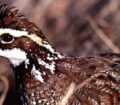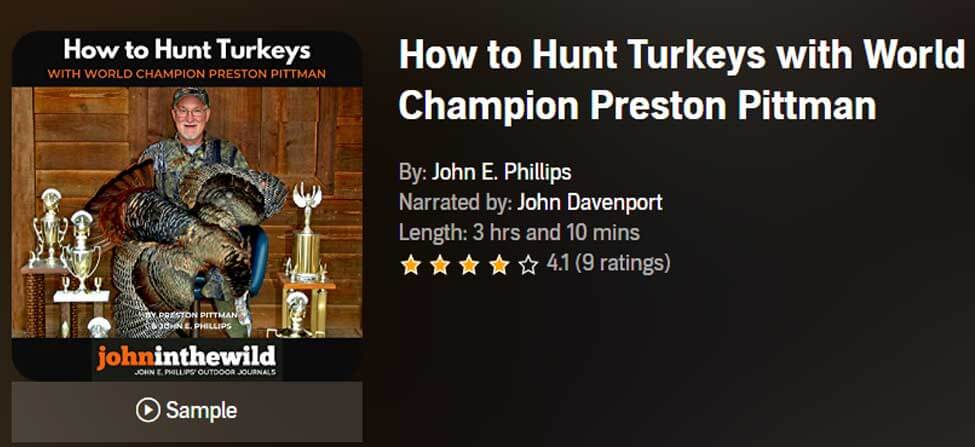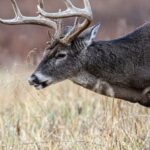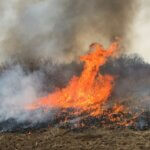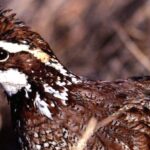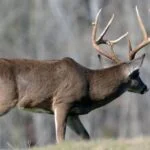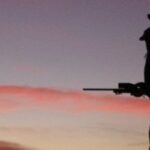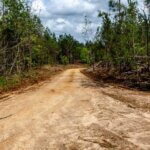Editor’s Note: Start now to manage your hunting lands for maximum wildlife production by following these recommendations from Chuck Sykes, the Director of Wildlife and Freshwater Fisheries in the Alabama Department of Conservation and Natural Resources (DCNR). He tells how the State of Alabama is meeting the growing demand for public-land deer and turkey hunters to have opportunities to hunt lands intensively managed for wildlife like owners manage their private lands. As new public lands have become available to be purchased by the Game & Fish Division, this division has implemented land-management practices in these areas to improve them for maximum wildlife production and older-age-class animals. The DCNR also has limited access to these lands by using a drawing system similar to that of the hunting permit trophy areas in western states. These strategies, when used, can help you improve the land you hunt if you own the land or have the landowner’s permission to implement these land-management tactics.
If you understand the value of burning a part of your land each year to increase timber production, prevent wildfires, and encourage new growth under pine stands, then if you’re leasing the land, talk with the landowner about using fire to improve the value of the land, increase the wildlife on the property, make the property more accessible, and give it more eye appeal.
Drew Tincher, a wildlife biologist in charge of Alabama’s Oakmulgee WMA, emphasizes that “Turkeys like open places because that’s where they find green shoots, grass seeds, acorns and insects to eat. When there’s a fire regime, the turkeys will move out, and then as soon as the fire goes out, they’ll funnel back into those burn areas and feed on some of the burnt-up bugs and toasted seeds and nuts that will be exposed after a burn. You may even spot gobblers and hens out in a burn while the burn’s still smoking.
“Generally, February and March are when we burn thick areas of our WMAs and SOAs in Alabama to open the woods to sunlight and create wildlife openings where turkeys, quail, and deer can feed. After the burn, just as spring begins, young sprouts, native grasses, and bushes will begin to grow. Turkeys prefer new growth; their poults and deer also provide insects and bugs. Also, often next to a burn will be a fairly thick area where turkeys, quail, and other ground-nesting birds can nest.”
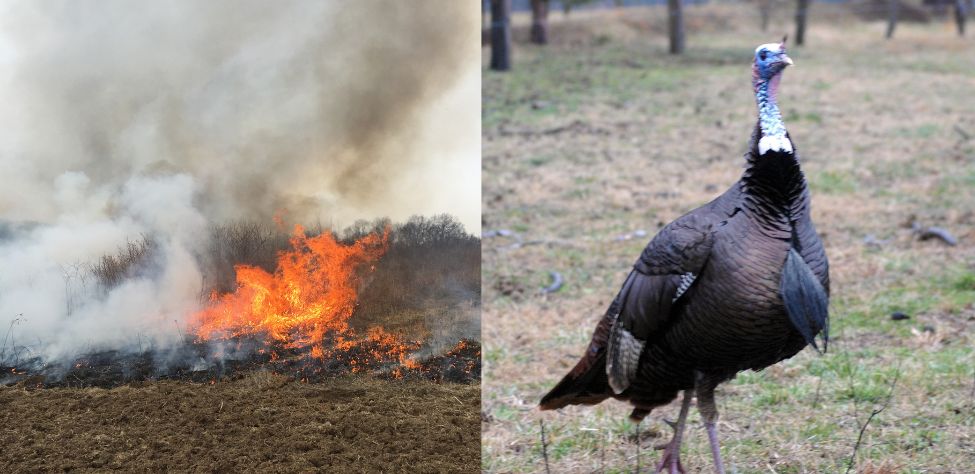
Courtney Conring, a wildlife biologist on four Alabama WMAs, emphasizes that “Burning resets Mother Nature’s plan for plant succession by clearing the understory and releasing native grasses and shrubs in the soil bank. The DCNR does fall discing along roadsides, which is another form of resetting Mother Nature to promote successional plant growth. Successional habitat on public-hunting grounds – like weeds, forbs, grasses, briars, and other green plants – next to hardwoods will give turkeys and quail places to rest and nest on the edges of the hardwoods.”
By managing the wildlife and the land through burning, mulching, controlling predators, removing non-commercial trees, leasing farming rights, planting green fields, and maintaining roads, you can manipulate the habitat for deer and turkeys now and open up your land for quail and woodcocks to provide maximum wildlife production.
Looking for more content? Check out our YouTube channel and watch “Terry Drury Talks PSE at the 2012 ATA Show” by John E. Phillips.

How to Hunt and Take Big Buck Deer on Small Properties
In this book, you’ll hear from 14 hunters who either have gained permission or leased properties as small as six acres to as much as 250 acres, and how they consistently take older-age-class bucks off these little lands.
VERSIONS: AUDIBLE, KINDLE & PRINT

Jim Crumley’s Secrets of Bowhunting Deer
Using a black magic marker and a gray work jumpsuit, Jim Crumley of Buchanan, Virginia, drastically changed the nature and purpose of hunting camouflage when he created the first sportsman’s camouflage – Trebark. Crumley’s love of bowhunting and his desire to be more invisible changed hunting clothing forever.
In this hunting guide, he shares the wisdom that he’s learned throughout his lifetime about how to be a hunter, how to find a deer lease, how to scout for deer, and more.
Special features include how to:
- Have a magic 60 acres to hunt
- Decide the best equipment to use
- Find deer year-round
- Locate land to hunt
- Know the best place to put your tree stand
- Get bucks within bow range
VERSIONS: AUDIBLE, KINDLE & PRINT

How to Hunt Deer Like a Pro
How do you know if the land you hunt has a trophy deer on it? Wildlife manager Bob Zaiglin, of Uvalde, Texas and Jim Crumley, the father of modern-day hunting camouflage, tells you how to find out. GPS can make finding and taking that trophy buck easier. This hunting guide will teach you how to hunt big bucks where no one else can find them, how to call deer, and how to become versatile as a deer hunter, so that if one deer tactic doesn’t work, another one will.
In the chapter, “How to find Bucks at Scrape,” Dr. Keith Causey, retired professor of Wildlife Science at Auburn University, describes the best way to hunt a scrape.
Brad Harrison of Neosho, Missouri, is a nationally-known videographer, professional deer hunter and master at calling deer. Another master is Will Primos of Primos Game Calls. These two experts will tell the best deer calls and when to use them in this book.
And for over 20 years, Bo Pitman, lodge manager of White Oak Plantation, has been studying deer movement patterns. He explains what types of conditions are best for predicting deer movement.
VERSIONS: AUDIBLE, KINDLE & PRINT

Deer hunting and deer hunters are drastically changing each year. To learn new techniques for hunting deer and have more places to hunt, I’ve interviewed some of the best deer hunters in the nation and share their tactics in How to Hunt Deer Like a Pro: Volume II.
In Chapter 10, Jacob Lamar tells you his tactics for consistently taking older-age-class bucks on public lands in several states. Chapter 11, Bob Walker explains how to find places on public lands where you can hunt that 99 percent of the other hunters never have considered hunting. The Bonus Chapter with David Ramey tells you how, where, when and with what equipment to take big Kansas bucks on public lands by hunting in 100-degree weather when others won’t hunt.
Chapter 13, Mark Drury, his family and his guests take mature bucks every season by having more small places to hunt rather than one large property. Drury explains the strategy of having satellite farms to hunt that only may be 50-150 acres each or less. Chapter 15, Pat Reeve, who hunts far-northern states and Canada, says, “I don’t like hunting for mature bucks until the weather is 20 degrees or less.” Chapter 4, Dr. Larry Marchinton says that funnels are the most-reliable stand sites to hunt for big bucks and tells why.
VERSIONS: AUDIBLE & PRINT
Check out John E. Phillips’ 12th book: “Turkeys: Today’s Tactics for Longbeards Tomorrow“
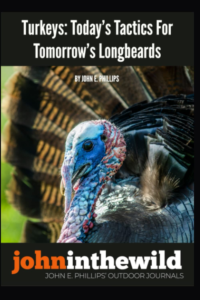
- hunting strategies with pros Will Primos, David Hale, Eddie Salter, Preston Pittman, Allen Jenkins, Terry Rohm, Paul Butski, Larry Norton and others.
- information about taking turkeys with .410 shotguns.
- box-call techniques.
- strategies for moving on turkeys.
- ways to hunt public-land gobblers.
- the differences in calling and hunting Eastern, Osceola and Western turkeys.
- the latest research on turkeys; and other information.
Click here to check out John’s 12th turkey book.
Expert Guidebooks on Turkey Hunting: Best Sellers
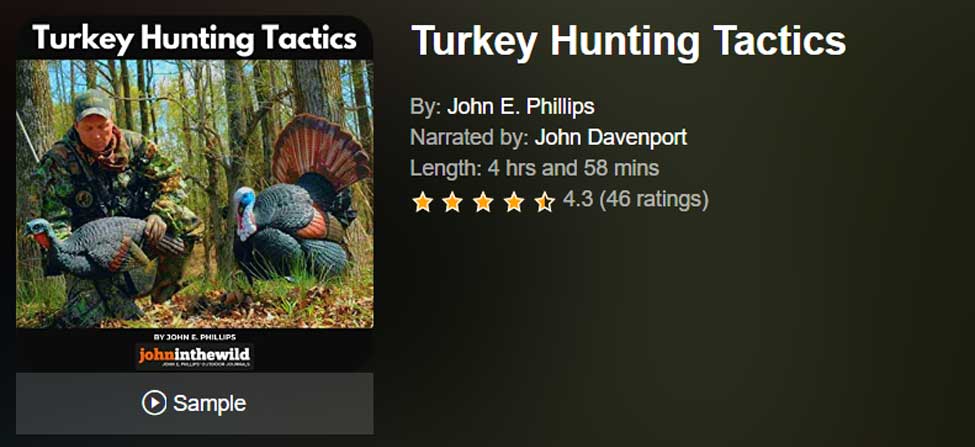
Turkey Hunting Tactics
This turkey hunting audiobook has entertaining chapters like: “How to Miss a Turkey”, “Hunting with a Guide”, and “The Turkey and the New York Lady”.
You’ll learn about all the subspecies of turkey across North America, how to use a turkey call, how to scout before turkey season, how to find a turkey to hunt, and what hunting gear you’ll need to put the odds in your favor to take a wily gobbler.
VERSIONS: AUDIBLE, KINDLE & PRINT
How to Hunt Turkeys with World Champion Preston Pittman
You easily can take a turkey if you don’t make any mistakes, but you have to know what the deadly sins of turkey hunting are to keep you from making those mistakes. If you understand how to hunt a turkey, you’re far more likely to take a gobbler than if you just know how to call a turkey.
Of course, calling is important, and if you want to learn to call a turkey, Preston Pittman will teach you how to call turkeys with box calls, friction calls, diaphragm calls, and other turkey sounds.
You’ll also learn why Preston Pittman once put turkey manure all over his body to kill a tough tom.
When you have turkeys that strut and drum in the middle of a field, when you know there’s no way to get close enough to get a shot, Pittman will show you some weird tactics that have worked for him to help you hunt tough ole toms.
But the main thing you’ll learn in this book is how to become the turkey.
Using what he’s learned while hunting wild turkeys, he’s also become a master woodsman who can take most game, regardless of where he hunts. To learn more secrets about how to be a turkey hunter from one of the world champions of the sport, this turkey-hunting book with Preston Pittman is a must.
VERSIONS: AUDIBLE, KINDLE & PRINT
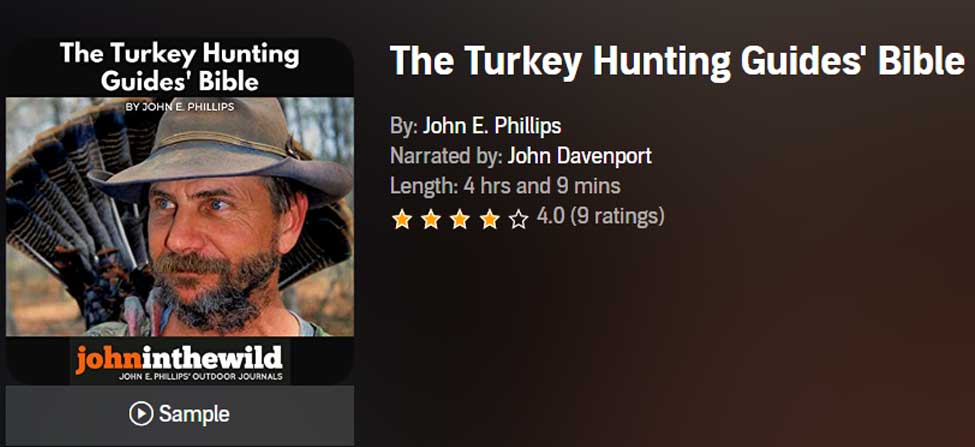
The Turkey Hunting Guides’ Bible
The quickest way to learn how to turkey hunt successfully is to either hunt with a turkey hunter with years of experience or a turkey-hunting guide. These two types of turkey hunters have solved most of the problems turkey hunters ever will face.
Just as one size of shoes won’t fit every person, one style of turkey hunting doesn’t fit each hunter. Each turkey-hunting guide interviewed for this book has his own style of calling, hunting, and outsmarting turkeys.
While listening to this book, make a list of the new information you’ve learned, take that list with you during turkey season, and try some of the new tactics. Then you’ll become a more versatile turkey hunter and prove the wisdom from The Turkey Hunting Guides’ Bible.
VERSIONS: AUDIBLE, KINDLE & PRINT
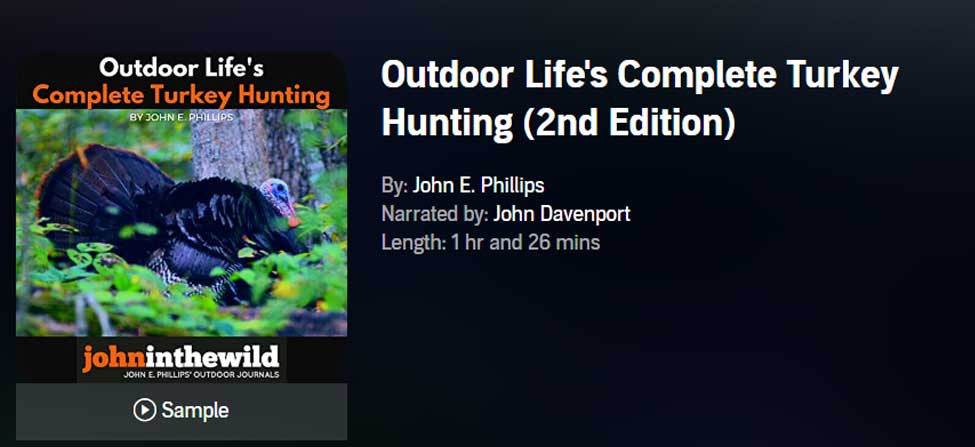
Outdoor Life’s Complete Turkey Hunting (2nd Edition)
This Audible book will help you learn how to call turkeys with two of the nation’s best, longtime and well-known turkey callers, Rob Keck, formerly with the National Wild Turkey Federation, and Lovett Williams, a wildlife biologist who recorded wild turkeys giving the calls that you’ll learn how to make on various types of turkey callers.
VERSIONS: AUDIBLE & KINDLE

